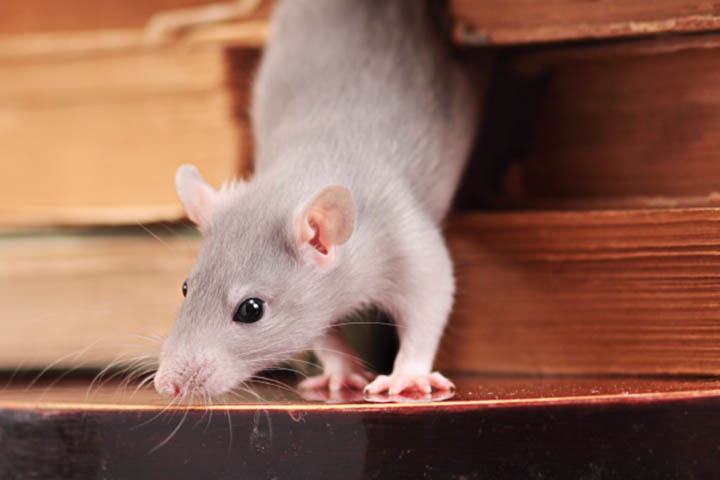Rats
Did you know? A rat can swim for three days before it drowns.

Explore Rats
Rodent Facts for Kids
- An adult rat can squeeze into your home through a hole as small as the size of a quarter.
- Rats can live for up to 18 months, but most die before they are one year old.
- Rats have strong teeth that allow them to chew through glass, cinderblock, wire, aluminum and lead.
- Smell, taste, touch and sound help direct them to their food sources.
- Rats are also responsible for spreading bubonic plague, also known as the "Black Death". Although fleas are primarily responsible for infecting humans, they were originally infected with the plague by feeding on the blood of rats.
Rats are scavengers. They have an excellent sense of taste and a good memory. A rat can identify certain substances, including rat poisons, after just a tiny taste of it.
Parents, find more kid-friendly facts and information about rodents to share with your kids at PestWorld.org. To learn how to get rid of roof rats and other rodents, visit the official NPMA website.
Norway Rats
The Norway rat is also called a "sewer rat". Norway rats tend to be larger and more aggressive to animals, humans and each other.
- Size: 10" to 12" long
- Color: Black
- Legs: 4
- Wings: No
- Antenna: No
- Common Name: Norway Rat
- Kingdom: Animalia
- Phylum: Chordata
- Class: Mammalia
- Order: Rodentia
- Family: Muridae
- Species: Rattus norvegicus
Diet:
Norway rats eat a wide variety of foods but mostly prefer cereal grains, meats, fish, nuts, and some fruits.
Habitat:
When Norway rats invade buildings, they usually remain in the basement or ground floor. They also live in fields, farms, woodpiles and buildings. Their nests are usually lined with shredded paper or cloth.
Impact:
These rats are known for the damage they cause by chewing on materials, urinating on food and eating stored foods. They have also been known to chew on wires, which can cause fires to start. They also carry disease and ectoparasites. Rats will also attack both animals and humans. Human babies and even adults have been killed in rat attacks.
Prevention:
- Rats will eat almost anything, so keep your homes clean and don’t leave food out.
- Make sure that your home and storage areas are clean and dry.
- Make sure that you clean your sheds, crawlspaces, and garbage cans often.
- Close up any small holes and cracks they can come in through.
Learn more about Norway rats and find other rodent facts for kids at the official NPMA website.
Roof Rats
Roof Rats are excellent climbers and get their name because they usually live high off the ground, like on the roof of a building. They have very poor vision and are color blind, but they have extremely strong senses of hearing, smell, touch and taste. Rats have four to six litters a year and each litter has 6 to 12 babies in it. These rats are only pregnant for about 21 to 23 days and they can start reproducing when they are three months old.
- Size: 16" nose to tail
- Color: Black
- Legs: 4
- Wings: No
- Antenna: No
- Common Name: Roof rat
- Kingdom: Animalia
- Phylum: Chordata
- Class: Mammalia
- Order: Rodentia
- Family: Muridae
- Species: Rattus rattus
Diet:
Roof Rats prefer eating fruits, berries, vegetables, cereal, pet food, nuts, grain, slugs, snails and rotten food.
Habitat:
Roof Rats are excellent climbers and they usually live in spaces on the tops of buildings, on roofs or in attics. They also live in sheds, garages, boxes, ceilings, under floors, in wood heaps and in thick grass.
Impact:
Roof rats cause damage to structures by chewing, eating stored foods and carrying diseases, such as Hantavirus. They are most famous for spreading the highly contagious bubonic plague in the Middle Ages. Rats will also attack both animals and humans. Human babies and even adults have been killed in rat attacks.
Prevention:
- Roof rats like to eat, so keep your homes clean and always put food away.
- Keep storage areas and pantries clean and dry.
- Clean and frequently inspect crawlspaces, garbage cans and sheds.
- Roof rats can enter your home through small holes in the foundation, so seal up any cracks around the perimeter.
Interested in more rat facts for kids? Find more educational information for use in your classroom, including a profile on roof rats, at the official NPMA website.




